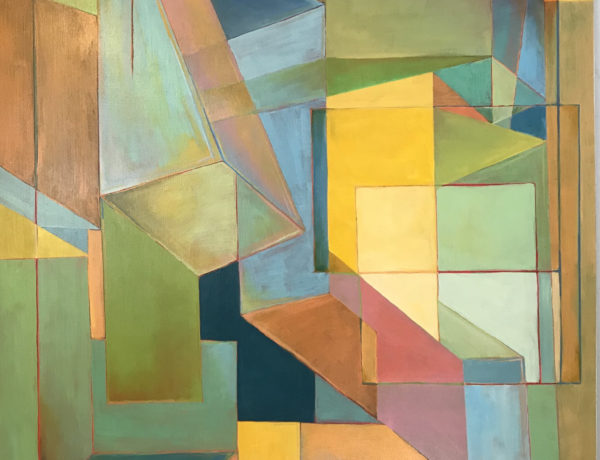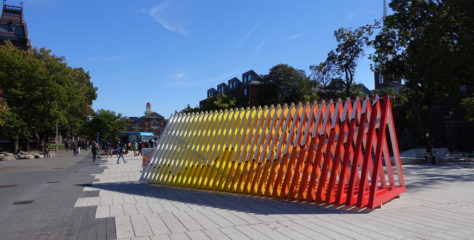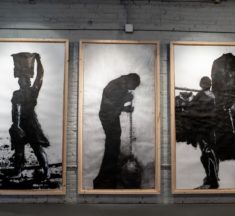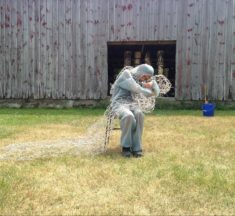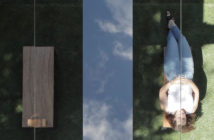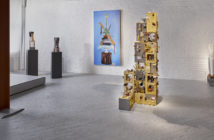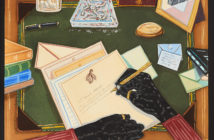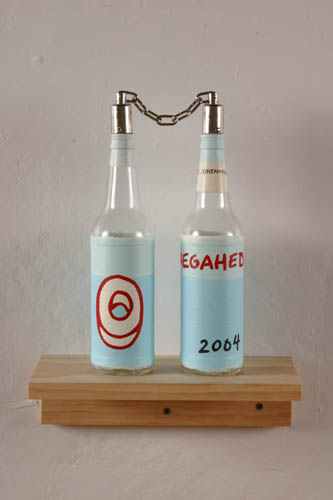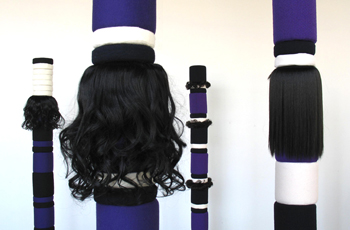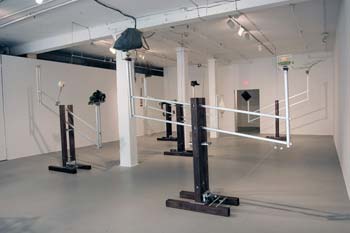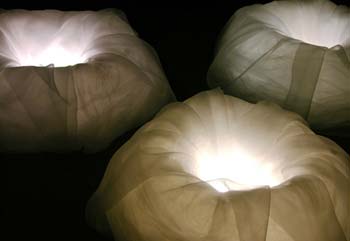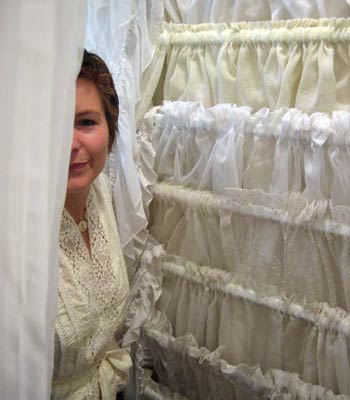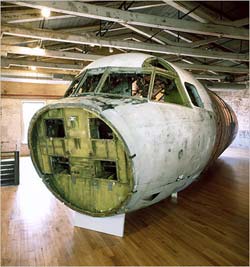Newest Features
By STEVE AISHMAN Do you know anyone who remembers when they were a child and would paint or draw all the time but then also remembers the first time they drew on a wall and someone came and yelled at them? Is this person you? At some point in their lives, most people are taught that there are correct and incorrect ways of reacting to the world, but more importantly, people learn that if you are in a state of contentment, it is illogical to react at all, because any reaction might…
By MICAH J. MALONE Perhaps the most distinct and, ironically, traditional aspects of Nina Lola Bachhuber’s show Yesterday I Ate A Lizard is its insistence on formal strategies. It is surprisingly refreshing to find a sculptor primarily interested in a vocabulary that actually stays within the boundaries of object making and does not make allusions past what is at hand. In this sense, her work gathers meaning almost exclusively from her choices of color, shape, surface, and material. The majority of Bachhuber’s work rests on familiar forms: Totem-like poles, eggs, bones, furniture…
By CHRISTIAN HOLLAND Do all stories have a climax, breaking point, or fulcrum of sorts? Well, they all can, but how the story is spoken, written, played, drawn, or however the author, (whether they know they are an author not), mediates their story, can effect that story’s narrative. Furthermore, the audience’s interpretation of the narrative may (or may not) assign significance to an event or series of events that they identify as the point of the story where the conditions of the protagonist deviate enough from their previous conditions to warrant a…
By KATHRYN ADA DUTOIT Death. Suffering. Self-image. These ideas and more are explored by Boston artists Bebe Beard and Linda Leslie Brown in new digital-based work in Projecting in Light, which was on view at Wentworth Institute of Technology’s Casella Gallery. The show is comprised of digital projections and drawings by Beard and Iris prints and lightbox installations by Brown. The overall feeling is of a coherent dialogue about self-representation and literal and metaphorical drowning. The small scale of the gallery enhances this feeling and creates a sense of intimacy. Beard’s Water…
By MATTHEW NASH So, when a real estate developer decides to promote a new pair of overpriced condos with two weekends of art events, I tend not to think too much about it. But given that the event is packed with a virtual who’s who of Boston art-scene regulars, that some of the work is interactive, that it was curated by Brendan Killian, that there is free food and wine, and that many of the artists will be on hand for conversations about their work, I am very interested. Of course, it…
By JASON SCHIEDEL On April 27th the Center for Advanced Visual Studies at MIT opened an exhibition of two projects by artists John Malpede and Harrell Fletcher with works that use reenactment as a strategy to bring historic events into the present tense. Realized in 2004 in the context of a pivotal election year, Malpede’s RFK in EKY was a two-day site-specific performance of Robert Kennedy’s “poverty tour” of eight southeastern Kentucky towns in 1968. Transcripts and interviews from the actual events of Kennedy’s visit were studied for a meticulous re-creation that…
By KATHLEEN BITETTI The revolution will not be televised Part One- the Creative Economy and Cultural Development Addressing creative economy & tourism issues What the foundation of creative economy is and what communities have been left out of the discussion. One of our key goals of the Creative Alliance*, founded by the Artists Foundation as an on line project that is non partisan and is dedicated to empowering artists to become part of the public policy dialogue on issues that directly impact their livelihoods, is to enlighten policy makers and elected officials…
By CHARLES GIULIANO Entering a small constructed space we encounter a work from 1994 “The Wise Man Learns from the Spider How to Spin the Web,” by the artist, Huang Yong Ping, who was born in rural Xiamen, China, in 1954. There is a small, simple writing table with several Xeroxed copies of texts in Chinese with images by Marcel Duchamp. Suspended above is a cone like structure with thin ribs covered by metal screening. Inside is a low wattage bulb and, at the bottom of the fixture, a transparent plastic bottom…

